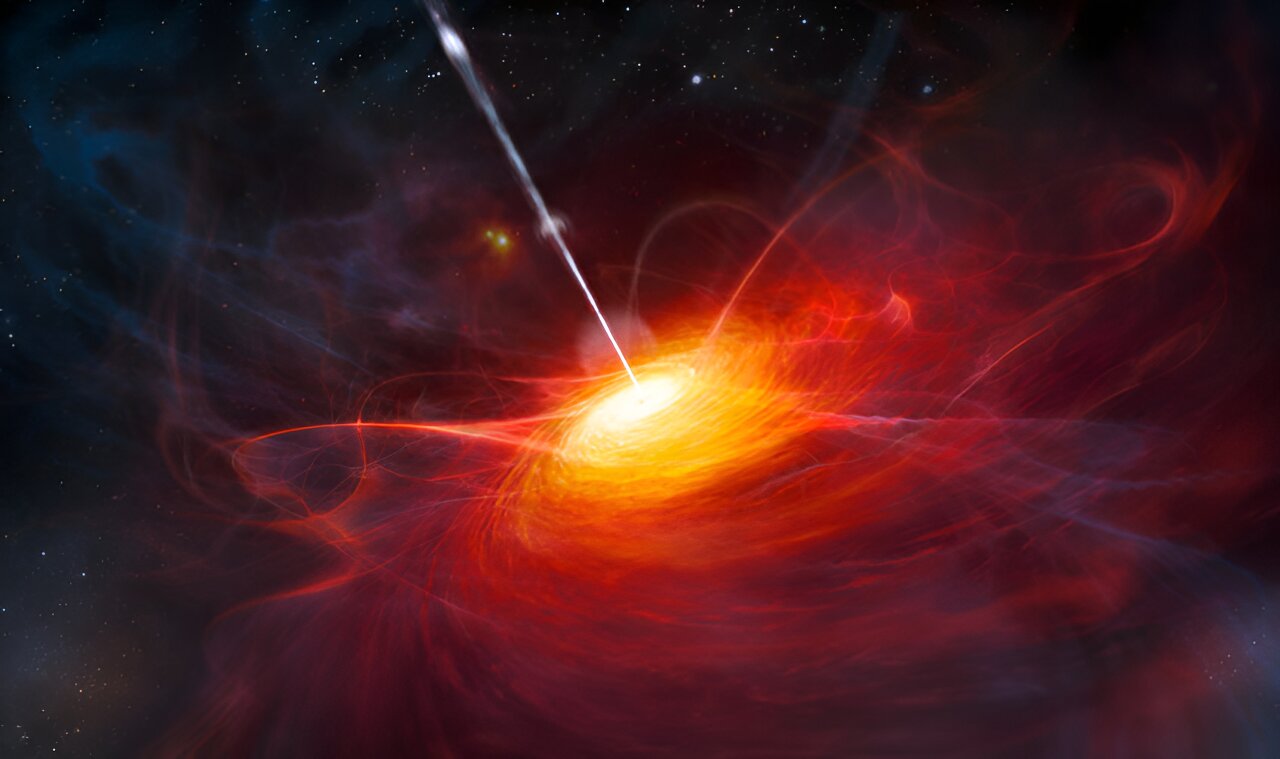Scientists have combined all four main instruments of the Very Large Telescope in Chile to explore black holes in galaxies that we see. Their current appearance corresponds to the way they were billions of years ago. One of them turned out to be too light for its star system.

Black hole in a distant galaxy
For a couple of years now, scientists have been able to explore black holes and galaxies that are billions of years away from us, which means we see them the way they were shortly after the Big Bang. At the same time, they surprise scientists all the time. Usually, either they themselves or their host systems turn out to be too big for this time. However, in a new article by researchers from the Max Planck Institute for Extraterrestrial Physics, the opposite is true.
Modern experts on the evolution of the Universe have the idea that galaxies and black holes that are located in their centers are slowly growing throughout their history. At the same time, there is a close relationship between them, because of which they do it synchronously.
But the black hole in the galaxy SDSS J092034.17+065718.0 challenges these ideas. It weighs only 320 million times more than the Sun, whereas its “mother” star system has a mass of 60 billion solar masses. This is clearly less than it should be.
Very Large Telescope
Until quite recently, it was impossible to make all these observations. The resolution of telescopes simply does not allow us to see the central regions of galaxies that are billions of light-years away from us. All supermassive black holes so far away from us, about which scientists had some idea, were quasars, i.e. they emitted jets of matter and were clearly visible due to this.
However, those black holes in the centers of galaxies that did not absorb or emit matter remained unnoticed until now. That is why scientists decided to use the Very Large Telescope in Chile. In fact, it consists of four giant instruments, and the scientists decided to apply them all at the same time. For this, they used a technique that had previously taken pictures of black holes.
The signal from all four objects was digitized and “folded” by the computer, which made very weak objects known. That’s how scientists have obtained an image of what is happening in the center of the galaxy, 11 billion years away from us, and learned that their ideas have been questioned by nature again.
However, astronomers already have an assumption about why the masses of the black hole and its galaxy are so inconsistent with each other. In their opinion, supernovae are to blame for this situation. They explode too often in SDSS J092034.17+065718.0 and simply “blow out” gas from the central regions, which could be fed by a monster in its center.
According to phys.org
Follow us on Twitter to get the most interesting space news in time
https://twitter.com/ust_magazin


